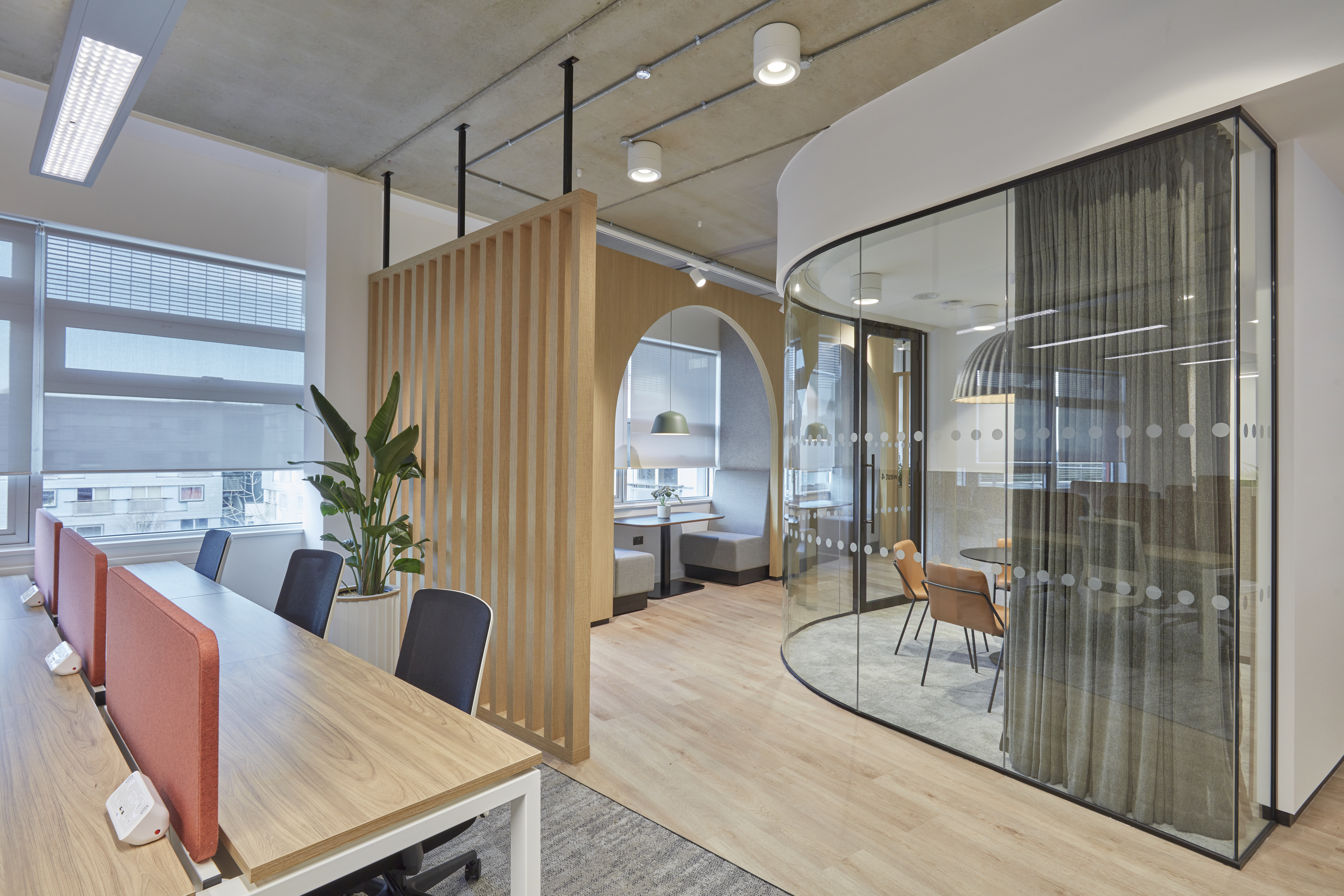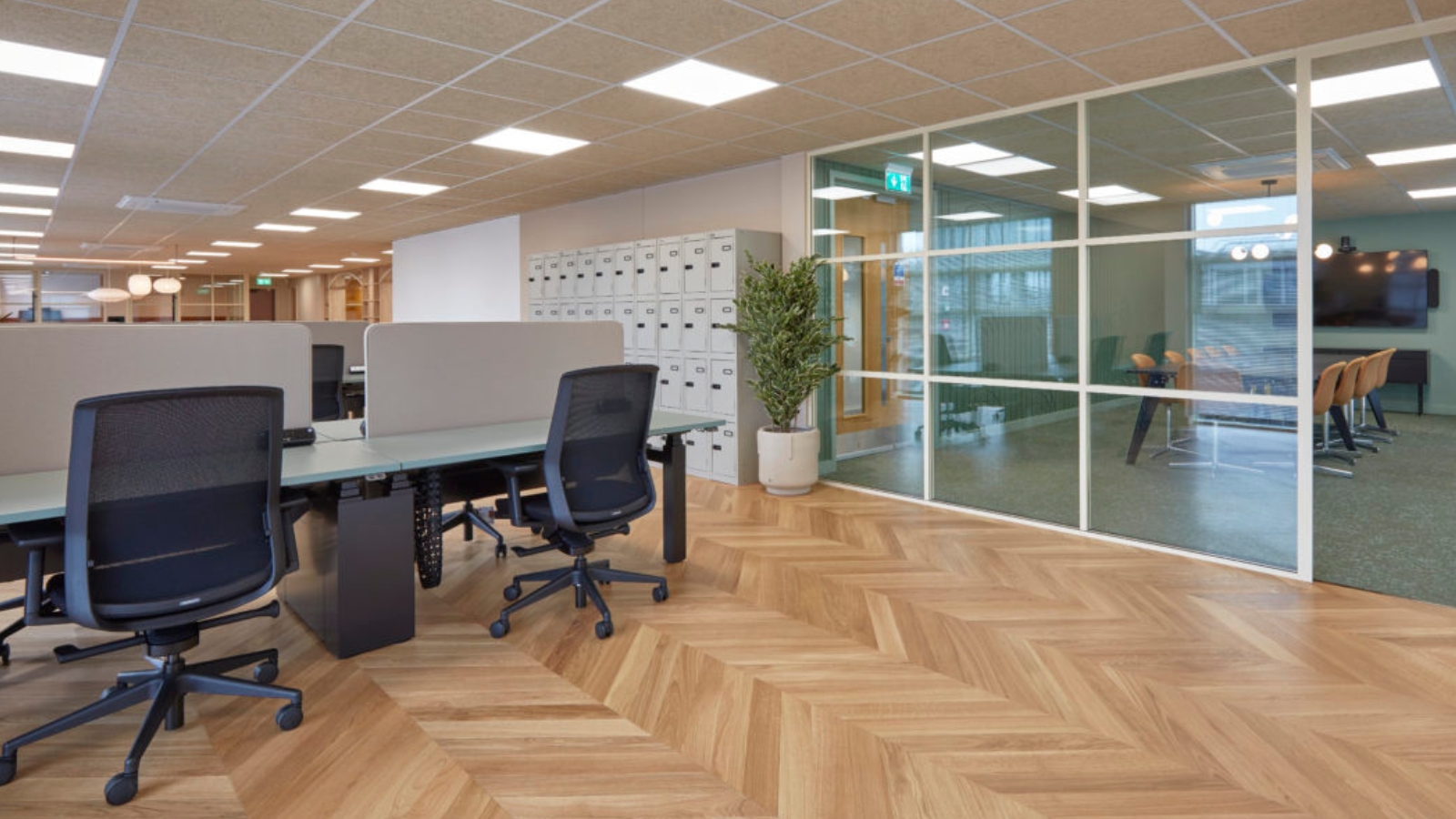Dealing with back pain is an all-too-common struggle that many of us face, and its disruptive impact on daily life cannot be overstated. In our contemporary work environment, where we spend a significant portion of the day hunched over desks, the prevalence of back pain has become almost inevitable.
Nevertheless, there’s a beacon of relief amidst the discomfort. The right ergonomic chair for back pain can make a huge difference; offering both comfort and preventative measures to help alleviate the woes of prolonged desk work while improving productivity.
Ergonomics is the study of designing and arranging workplaces, products, and systems to ensure they fit users, promoting efficiency, comfort, and overall wellbeing.
The goal of ergonomics is to create environments that adapt to the user instead of forcing the user to adapt to the environment. This multidisciplinary field considers factors such as physical, cognitive, and organisational aspects to optimise human performance and prevent discomfort or injury.
Ergonomic design has a profound impact on both productivity and overall wellbeing. Employees working in environments prioritising their physical and mental health are more likely to stay engaged, focused, and motivated. Ergonomically designed workspaces reduce the risk of fatigue, discomfort, and injuries, enabling individuals to maintain higher levels of concentration and efficiency throughout the day.
Furthermore, investing in ergonomic principles demonstrates an organisation’s commitment to staff wellbeing, fostering a positive workplace culture. This, in turn, can increase employee satisfaction, lower absenteeism, and improve morale.

Back pain is a prevalent issue in UK workplaces, often stemming from poor ergonomics. Incorrect posture, prolonged periods of sitting, and poorly designed workstations contribute to back pain. Slouching, hunching over desks, or straining to view computer screens at awkward angles can all lead to musculoskeletal issues. Inadequate lumbar support, uncomfortable chairs, and improperly adjusted desks can exacerbate these problems.
Understanding and addressing these common causes of back pain are essential for creating ergonomic workspaces. Properly designed chairs and adjustable desks and encouraging regular breaks for movement can significantly alleviate back pain associated with poor ergonomics.
The office chair is a fundamental element in ergonomic design, as it directly influences posture, comfort, and overall wellbeing. Selecting the right office chair prevents back pain and promotes optimal productivity.
An ergonomic office chair supports the spine’s natural curvature, distributes body weight evenly, and allows for comfortable positioning during extended periods of sitting. Investing in high-quality, ergonomic chairs not only helps prevent health issues but also contributes to a more positive and productive work environment.

When choosing an ergonomic chair for back pain, it’s not only the chair’s features and physical dimensions that matter. You must also determine your specific needs to ensure the chair effectively addresses your individual requirements and mitigates your pain.
When it comes to selecting ergonomic furniture, understanding your own dimensions is a crucial starting point. Consider your height, weight, and body proportions to ensure your chosen furniture accommodates your unique physique. A chair that is too small or too large can contribute to discomfort and musculoskeletal issues. Pay attention to factors such as seat depth, height, and armrest adjustment to find furniture catering to your specific dimensions and provide a comfortable and supportive fit.
The size of the chair’s seat plays a significant role in determining comfort and support. A seat that is too narrow or too wide may cause discomfort and negatively impact posture. When assessing your needs, consider the width and depth of the chair seat. Ideally, the seat should be wide enough to provide ample support for your hips and thighs without being too spacious, allowing you to maintain a neutral and comfortable sitting position.
The chair should provide adequate lumbar support to maintain your spine’s natural curve. Lumbar support helps distribute the weight of your upper body evenly and reduces the risk of lower back pain. Look for chairs with adjustable lumbar support features, allowing you to customise the level of support based on your individual needs. It also helps to consider the support provided for the neck, shoulders, and arms to ensure a comprehensive ergonomic solution.
Before purchasing, it is highly recommended to physically try different chairs to assess their comfort and ergonomic features. Sit in the chairs for an extended period, mimicking your typical work conditions to evaluate their suitability. Pay attention to how well the chair supports your back, neck, and arms. Test the chair’s adjustability, including seat height, tilt, and armrest positions. Ensure that the chair promotes a natural and relaxed posture.
As each person’s body is unique, choosing a chair with high adjustability is key to tailoring your seating experience for optimal comfort and wellbeing. Consider the following features to find the most suitable ergonomic chair for back pain and productivity.
An ergonomic chair’s versatility begins with adjustable seat height and depth. Optimal customisation ensures that your feet lie flat on the floor, promoting excellent blood circulation and minimising pressure on the lower back. The ability to fine-tune the seat depth allows you to maintain a comfortable and supportive position, especially during extended periods of sitting.
Lumbar support is a crucial feature for preventing and alleviating lower back pain. Look for a chair with adjustable lumbar support to accommodate your unique spinal curvature. This will help reduce stress on the lower back muscles and promote a healthy sitting posture.
Adjustable armrests contribute significantly to overall comfort and support. The ideal ergonomic chair allows you to customise the height and width of the armrests to ensure your arms rest comfortably and your shoulders remain relaxed. Properly adjusted armrests reduce strain on your neck and shoulders, fostering a more ergonomic and pain-free seating experience.
The material and cushioning of the seat play a vital role in comfort and durability. Look for chairs with breathable materials that allow air circulation, preventing discomfort from heat and moisture build-up. High-quality cushioning, whether foam or memory foam, provides optimal support and conforms to your body shape. Consider the durability of the material to ensure the chair withstands daily use.
The ability to swivel and move freely is essential for dynamic and comfortable sitting. A chair with a swivel base allows you to reach different areas of your workspace without straining. It also helps to consider chairs with smooth-rolling casters for easy mobility, allowing you to move effortlessly between tasks without unnecessary strain on your back and body.

Tackling back pain in the modern workplace requires a thoughtful approach to ergonomics, starting with understanding its impact on productivity and wellbeing. By addressing common causes of back pain and investing in the right office chair , individuals can create ergonomic workspaces that foster comfort, prevent long-term health issues, and boost productivity.
At COEL, we can help you source ergonomic chairs that align seamlessly with the principles of ergonomics. We carefully curate our office furniture to meet the diverse needs of individuals and organisations, ensuring you find the perfect solution for your workspace.